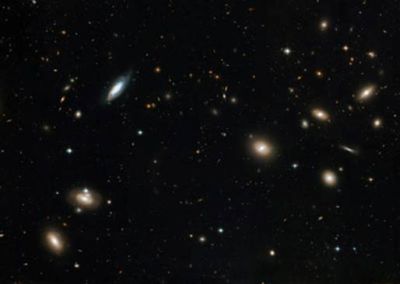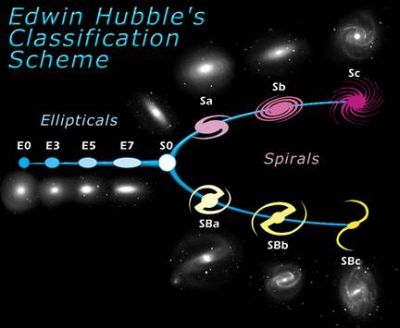15 June 2008

Credit: NASA, ESA, and the Hubble Heritage Team (STScI/AURA)
NASA's Hubble Space Telescope (HST) pictured a giant cluster of galaxies, known as the Coma Cluster of galaxies. HST's Advanced Camera for Surveys (ACS) viewed a large area of the cluster, spanning several million light-years across. The entire cluster contains thousands of galaxies in a spherical shape over 20 million light-years in diameter.
The clusters of galaxies are among the largest known cosmic structures. A large cluster of galaxies contains hundreds or thousands of galaxies, bound by their mutual gravitational influence.
The Coma Cluster is over 300 million light years away. It is named after the constellation Coma Berenices, as it is visible among the stars of this constellation. Interestingly, the Coma Cluster is located away from the Milky Way in the sky. Therefore, the Coma Cluster lies in an area that is not obscured by the dust and gas of the Milky Way, and clearly observable by Earth-based telescopes.
Most of the galaxies that populate the central portion of the Coma Cluster are elliptical galaxies. These galaxies shine as fuzzy balls or ellipsoids. They are dark yellow in color as they are composed mostly of old red stars. The Coma Cluster contains a large population of both dwarf and giant elliptical galaxies. Some giant elliptical galaxies contain several trillion stars.
Several spiral galaxies are located farther out from the center of the cluster. These galaxies possess clouds of cold gas that are forming new stars. Spiral arms and dust lanes are characteristics of these bright bluish-white galaxies.

Credit: NASA/ESA
The Coma Cluster also contains an interesting type of galaxies, known as the lenticular galaxies, and designated S0 (S-zero) galaxies. They show common characteristics of both the spiral and elliptical galaxies. Like the elliptical galaxies, they are made up of old red stars and show little evidence of recent star formation; but they do show disk structure like the spiral galaxies.
In 1936, the US astronomer Edwin Hubble invented a morphological classification scheme of the galaxies, known as the Hubble tuning-fork, due to its shape. The scheme features three main types of galaxies: the elliptical galaxies, the spiral galaxies and the lenticular galaxies. Small, irregularly-shaped galaxies comprise a fourth class, known as the irregular galaxies. The Hubble tuning-fork is based on the appearance of galaxies on photographs.
This Hubble image shows a section of the cluster that extends roughly one-third of the way out from the cluster’s center. One bright spiral galaxy is visible in the upper left of the image. It is remarkably brighter and bluer than galaxies surrounding it. The other galaxies in the image are either elliptical galaxies, S0 galaxies, or background galaxies beyond the Coma Cluster sphere.
Further Reading
Hubble Heritage Release of Coma Cluster
Hubble ESA Release of Coma Cluster
Aymen Mohamed Ibrahem
Senior Astronomy Specialist